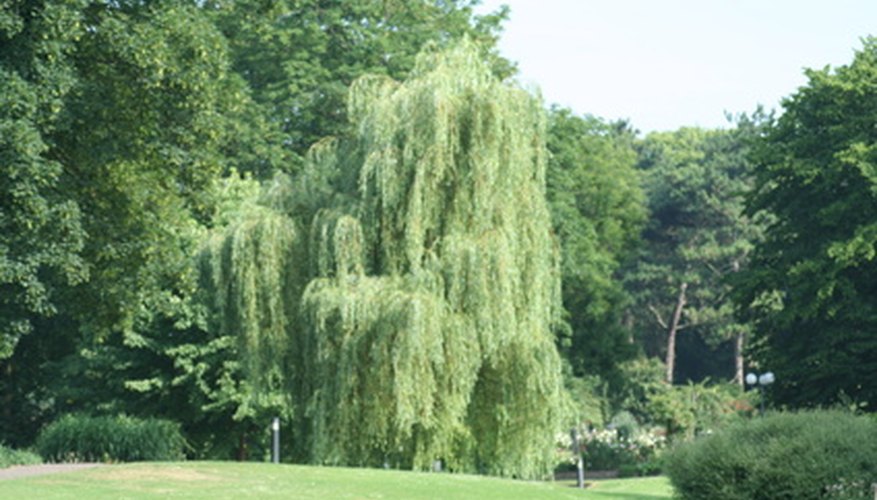The weeping willow, or Salix babylonica, has graceful branches that droop to the ground. Though it provides a stunning focal point, it is not recommended in residential landscaping. Because of its rapid growth above and below the ground, the weeping willow can cause problems with septic systems and house foundations.
Growth Pattern
The weeping willow grows quickly, often becoming too large for its designated space. Its roots grow aggressively, seeking out water below ground. Drought conditions tend to worsen this situation, as water close to the surface becomes scarce. The willow's roots search for leaks in a foundation, or water, sewer and septic system. For these reasons, the University of Tennessee Extension includes the weeping willow on its list of trees to reconsider before planting.
- The weeping willow grows quickly, often becoming too large for its designated space.
- For these reasons, the University of Tennessee Extension includes the weeping willow on its list of trees to reconsider before planting.
Foundation Damage
Willows look for wet areas, especially leaking pipes, foundations and septic drain fields. Though the roots normally do not grow under foundations, if moisture is present, they will be drawn into the cracks. As the roots increase in diameter over the years, structural damage can occur. Damage to a shallow foundation is more likely than damage to a deeper foundation.
- Willows look for wet areas, especially leaking pipes, foundations and septic drain fields.
- Though the roots normally do not grow under foundations, if moisture is present, they will be drawn into the cracks.
Solutions
Moisture prevention is key to protecting against damage from weeping willow roots. Eliminate moisture problems around and under foundations. Replace leaking pipes. Use rain gutters to divert any water flow away from the foundation. If the roots are threatening the foundation, excavate around the house and cut the roots, then install a root barrier. As a last resort, have the tree removed. If a drooping form is desired in a residential landscape, the University of Tennessee Extension recommends the weeping cherry, mulberry or birch instead.
- Moisture prevention is key to protecting against damage from weeping willow roots.
- If the roots are threatening the foundation, excavate around the house and cut the roots, then install a root barrier.
